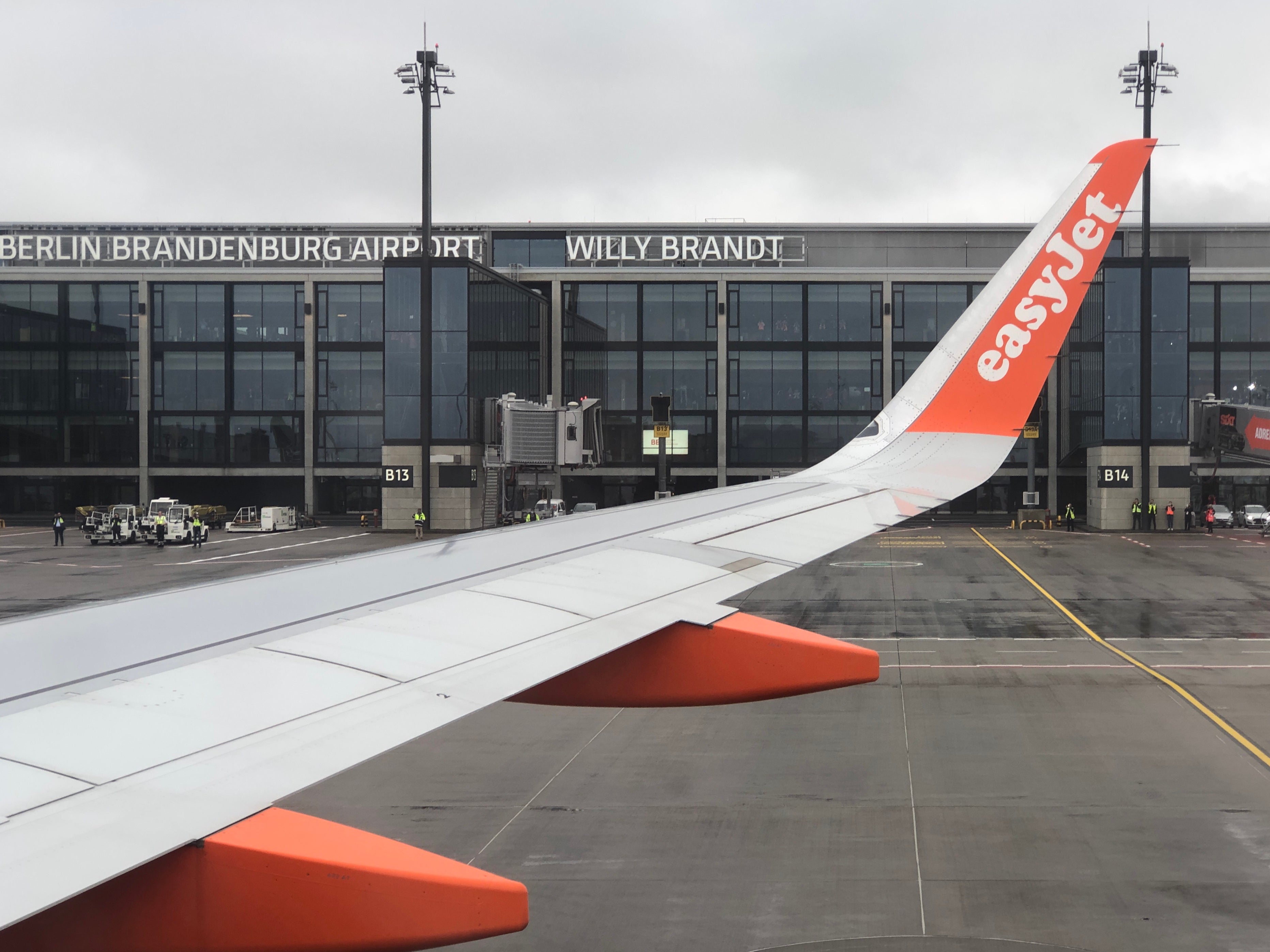New Berlin airport welcomes its first passengers – nine years late
The first touchdown at BER was an easyJet aircraft, just ahead of Lufthansa

Your support helps us to tell the story
From reproductive rights to climate change to Big Tech, The Independent is on the ground when the story is developing. Whether it's investigating the financials of Elon Musk's pro-Trump PAC or producing our latest documentary, 'The A Word', which shines a light on the American women fighting for reproductive rights, we know how important it is to parse out the facts from the messaging.
At such a critical moment in US history, we need reporters on the ground. Your donation allows us to keep sending journalists to speak to both sides of the story.
The Independent is trusted by Americans across the entire political spectrum. And unlike many other quality news outlets, we choose not to lock Americans out of our reporting and analysis with paywalls. We believe quality journalism should be available to everyone, paid for by those who can afford it.
Your support makes all the difference.Nine years late and billions of euros over budget, Berlin’s new airport has finally welcomed its first passengers.
At 2pm a special easyJet flight from the old Tegel airport touched down at BER, as it is known, just ahead of an arrival by Lufthansa. The first arrival was met by a “water salute’ from the airport firefighters. But the celebrations were muted, due both to the coronavirus pandemic – which has traumatised airlines and airports – and a delay that has become a national embarrassment.
Planning for a new hub for the German capital began shortly after unification three decades ago. The site was chosen in 1996: south of the old East Berlin airport, Schoenefeld, which is currently used by a range of budget airlines.
Berlin Brandenburg Airport Willy Brandt, to give it the full name, was originally due to open in 2011.
Two villages, Diepensee and Selchow, were relocated and the residents compensated.
But poor planning and multiple construction blunders delayed the opening by almost a decade, while the cost of the new airport rose to €10bn (£9.1bn) – almost four times the original estimate.
Many of the problems stemmed from flawed design coupled with shoddy workmanship – but bribery and corruption was also involved.
The fire protection system, and the smoke exhaust process, was at the heart of the delays.
At one stage it was proposed to have a team of 700 human fire spotters while the necessary engineering work was completed.
A member of the Lufthansa supervisory board recommended that the whole airport should be torn down and rebuilt, while an airport spokesman was sacked after saying: “Only someone dependent on medication will give you any firm guarantees for this airport.”
Some fixtures including display screens have already had to be replaced because they have reached the end of their design life.
The airport authority hopes that the catalogue of expensive errors will quickly be forgotten once passengers become accustomed to BER, as it has become known.
It replaces the old Tegel airport in former West Berlin, which is to close within a week. The old Schoenefeld terminal, a scruffy hangover from the days of the German Democratic Republic, will continue to function as Terminal 5 of the new airport and remain the home to Europe’s biggest budget airline, Ryanair.
The honour for the first flight to the new terminal, though, went to easyJet flight 3110 (signifying the date), which landed just ahead of Lufthansa’s flight 2020.
The easyJet Airbus had flown from Tegel airport, crossing the former Berlin airport at Tempelhof. On board was the airline’s chief executive, Johan Lundgren.
Speaking exclusively to The Independent before the flight, he said: “We’re extraordinarily delighted today. This is something that we’ve been waiting quite a long time for, as you can imagine.
“We consider ourselves the home carrier for Berlin. We’ve been operating here since 2004. Last year we had 12 million customers here.”
Following the collapse of Air Berlin in 2017, easyJet consolidated its position at the German capital.
It has the logistical challenge of moving 34 aircraft from Tegel to BER, of which the maiden passenger flight was one.
BER was originally intended to be a major hub airport to rival Frankfurt, Amsterdam, Paris CDG and London Heathrow. But Lufthansa has shown little interest, with the only destinations being Frankfurt and Munich.
The main customers will be easyJet and Ryanair, along with Lufthansa’s budget subsidiary, Eurowings, flying “point-to-point” within Europe.
The only long-haul destinations are Beijing and Ulan Bator.
The list of airlines that are not flying to BER is as significant as those which are. Giant carriers such as Emirates, Cathay Pacific, Singapore Airlines are not on board, and no American carrier is present – though United may start flying to New York Newark in March 2021.
After the original opening date of October 2011 was missed, an elaborate opening ceremony was planned for June 2012. The first departure was intended to be a Lufthansa Airbus A380 flying from Berlin to Frankfurt. But the opening was postponed with less than four weeks to go, and the airport was plunged into eight more years of redesign, rebuilding and recrimination.
Instead of the Lufthansa “superjumbo,” the maiden flight is an easyJet Airbus A320 going to Gatwick at 6.45am on 1 November.




Join our commenting forum
Join thought-provoking conversations, follow other Independent readers and see their replies
Comments